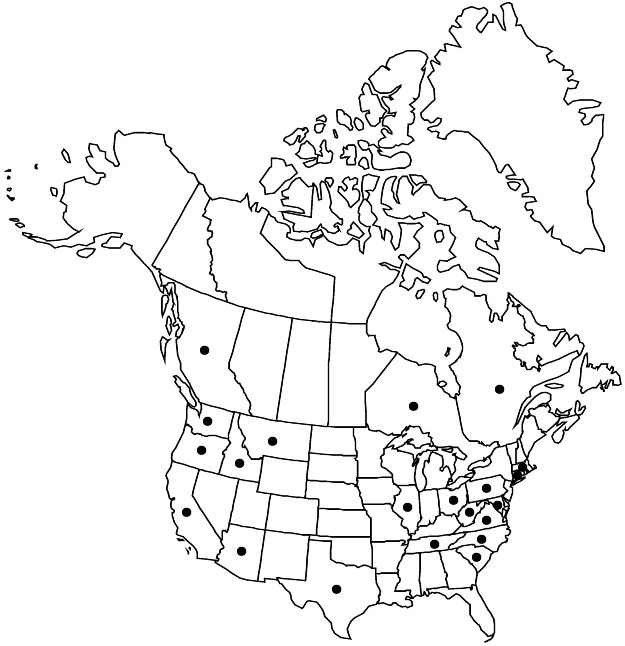Euphorbia lathyris
Sp. Pl. 1: 457. 1753. (as lathyrus)
Herbs, annual or biennial, with taproot. Stems erect, unbranched or branched, 200 cm, glabrous, glaucous. Leaves opposite, decussate; petiole absent; blade linear to oblong-lanceolate, 30–120 × 3–25 mm, base acute, rounded, cordate or clasping, margins entire, apex acute or subobtuse, sometimes mucronate, surfaces glabrous, abaxial ± glaucous; venation pinnate, midvein prominent. Cyathial arrangement: terminal pleiochasial branches 2–4, each 1–2 times 2-branched; pleiochasial bracts cordate-lanceolate, shorter and wider than distal leaves; dichasial bracts distinct, ovate-oblong to lanceolate, base subcordate, margins entire, apex acute; axillary cymose branches 0–10. Cyathia: peduncle 0–0.5 mm. Involucre campanulate, 1.2–2.3 × 1.4–2.5 mm, glabrous; glands 4, elliptic, 0.3–0.6 × 1–1.3 mm; horns divergent, thick, tips rounded, dilated, 0.5–1.4 mm. Staminate flowers 25–30. Pistillate flowers: ovary glabrous; styles 0.7–2.2 mm, 2-fid. Capsules depressed-globose, 9–12 × 12–16 mm, deeply 3-lobed, tardily dehiscent and appearing indehiscent, mesocarp spongy; cocci rounded, smooth, glabrous; columella 4–5.2 mm. Seeds brownish or blackish, oblong, 4.5–6 × 3–4.2 mm, rugose, irregularly reticulate; caruncle substipitate, hat-shaped, 1.6–2 × 1.2–1.5 mm.
Phenology: Flowering and fruiting winter–fall.
Habitat: Roadsides, cultivated fields, stream banks, waste places.
Elevation: 0–1800 m.
Distribution

Introduced; B.C., Ont., Que., Ariz., Calif., Conn., Idaho, Ill., Md., Mass., Mont., N.C., Ohio, Oreg., Pa., S.C., Tenn., Tex., Va., Wash., W.Va., Europe, Asia, Africa, introduced also in Mexico, South America, Australia.
Discussion
Euphorbia lathyris is most likely native to the central and eastern Mediterranean region, but it is widely cultivated and often locally escaped in temperate regions worldwide, as in the flora area.
Selected References
None.